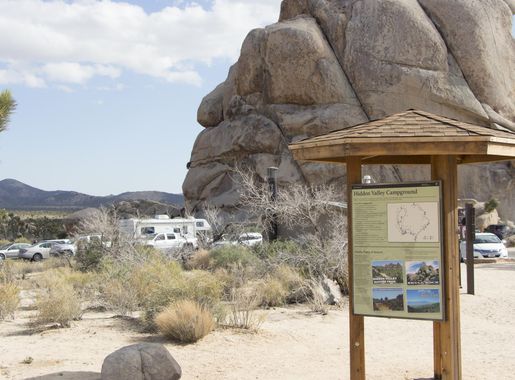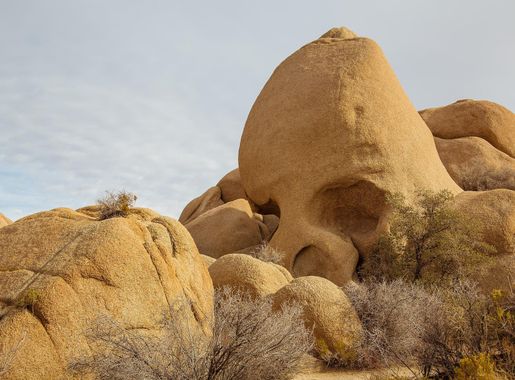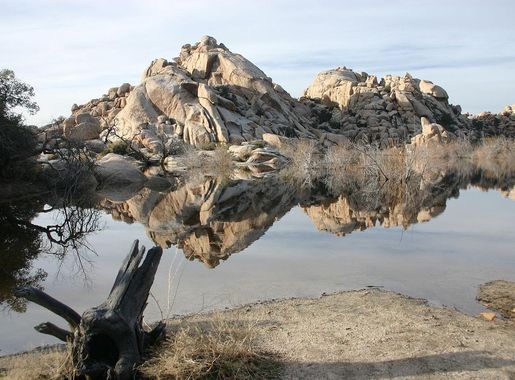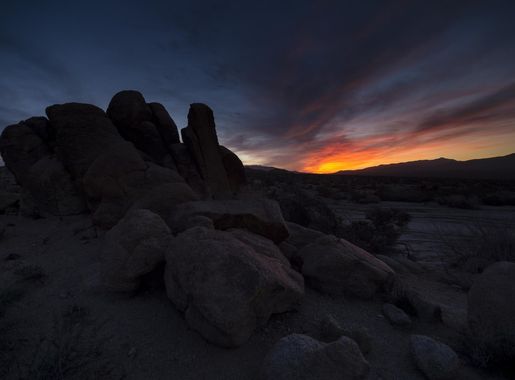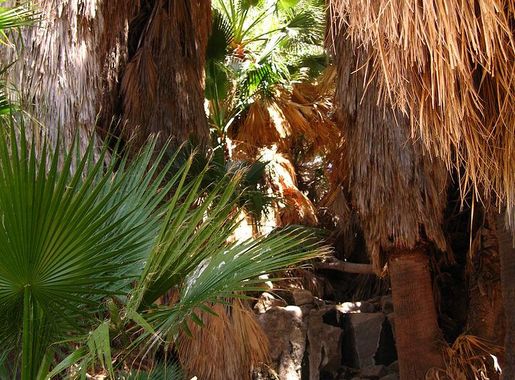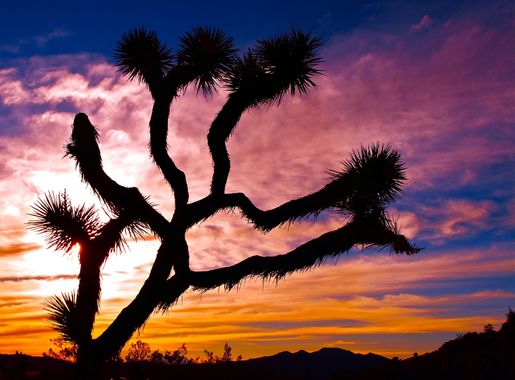
The Enigmatic Wilderness of Joshua Tree National Park
Discover the surreal landscapes and celestial wonders of Joshua Tree National Park, a desert oasis where the Mojave and Colorado deserts converge.
Joshua Tree National Park is a vast and captivating expanse in Southern California. It is where the Mojave and Colorado deserts meet, offering a diverse landscape filled with unique rock formations, star-studded skies, and the iconic Joshua Trees. This park is a haven for outdoor enthusiasts and nature lovers alike, boasting a rich tapestry of desert flora and fauna. Exploring Joshua Tree National Park is like stepping into another world. The park's stunning geological features, including giant boulders and rugged mountains, provide endless opportunities for hiking, rock climbing, and photography. The Hidden Valley and Barker Dam trails are perfect for those looking to experience the park's beauty without venturing too far from the main roads. At night, Joshua Tree transforms into a stargazer's paradise. The clear desert skies offer some of the best stargazing opportunities in the country. Whether you are camping out under the stars or enjoying a guided night hike, the park's celestial display is truly mesmerizing. Beyond its natural wonders, Joshua Tree National Park has a rich cultural history. Indigenous tribes have lived in the region for thousands of years, and evidence of their presence can be found in the form of petroglyphs and ancient artifacts. Modern visitors can learn about the park's history at the Joshua Tree Visitor Center and through ranger-led programs.
Local tips in Joshua Tree National Park
- Visit in the spring or fall to avoid extreme temperatures.
- Bring plenty of water and sun protection, as there are few amenities in the park.
- Check out the Cholla Cactus Garden for a unique desert plant experience.
- Try to book your campsite in advance, especially during peak seasons.
- Don't miss the Keys View for a panoramic vista of the Coachella Valley.
The Enigmatic Wilderness of Joshua Tree National Park
Joshua Tree National Park is a vast and captivating expanse in Southern California. It is where the Mojave and Colorado deserts meet, offering a diverse landscape filled with unique rock formations, star-studded skies, and the iconic Joshua Trees. This park is a haven for outdoor enthusiasts and nature lovers alike, boasting a rich tapestry of desert flora and fauna. Exploring Joshua Tree National Park is like stepping into another world. The park's stunning geological features, including giant boulders and rugged mountains, provide endless opportunities for hiking, rock climbing, and photography. The Hidden Valley and Barker Dam trails are perfect for those looking to experience the park's beauty without venturing too far from the main roads. At night, Joshua Tree transforms into a stargazer's paradise. The clear desert skies offer some of the best stargazing opportunities in the country. Whether you are camping out under the stars or enjoying a guided night hike, the park's celestial display is truly mesmerizing. Beyond its natural wonders, Joshua Tree National Park has a rich cultural history. Indigenous tribes have lived in the region for thousands of years, and evidence of their presence can be found in the form of petroglyphs and ancient artifacts. Modern visitors can learn about the park's history at the Joshua Tree Visitor Center and through ranger-led programs.
When is the best time to go to Joshua Tree National Park?
Iconic landmarks you can’t miss
Joshua Tree Visitor Center
Explore the unique landscapes and rich history of Joshua Tree at the Visitor Center, your essential guide to adventure in this iconic national park.
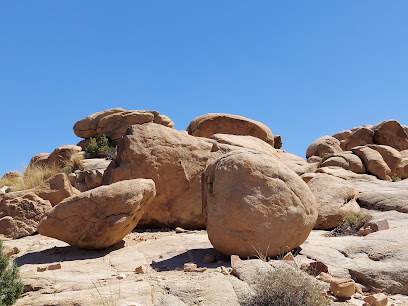
Keys View
Discover stunning panoramic views of the Coachella Valley and the San Andreas Fault at Keys View, a scenic highlight in Joshua Tree National Park.
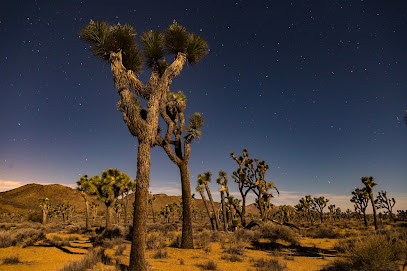
Skull Rock Trail
Experience the stunning beauty of Skull Rock Trail in Joshua Tree National Park, where unique rock formations and breathtaking desert vistas await every visitor.
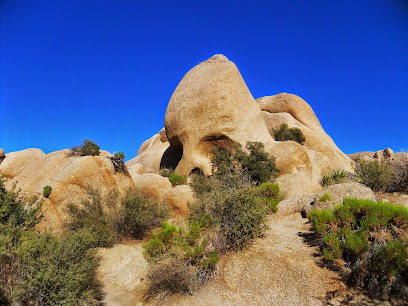
Hidden Valley Nature Trail Trailhead
Explore the breathtaking landscapes and unique desert ecosystem at Hidden Valley Nature Trail in Joshua Tree National Park.
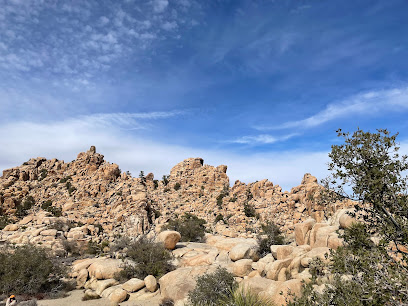
Cottonwood Visitor Center
Explore Cottonwood Visitor Center for essential insights and stunning views of Joshua Tree National Park's unique desert landscapes and ecosystems.
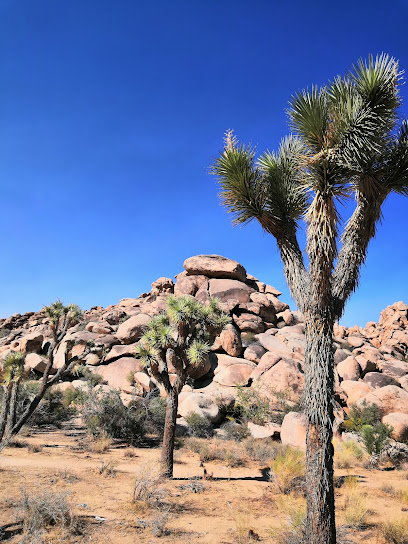
Noah Purifoy Outdoor Desert Art Museum
Explore the Noah Purifoy Outdoor Desert Art Museum, a stunning open-air gallery in Joshua Tree showcasing unique sculptures and installations in a breathtaking desert setting.
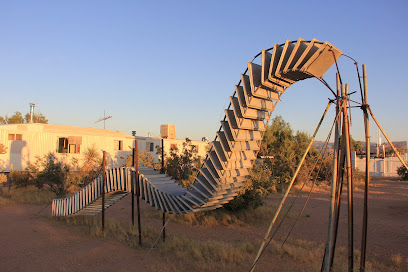
Arch Rock
Explore the stunning Arch Rock in Joshua Tree National Park – a natural wonder that captivates with its beauty and outdoor adventures.

Barker Dam
Explore Barker Dam in Joshua Tree National Park, a scenic oasis rich in history and natural beauty, perfect for nature lovers and adventurers alike.
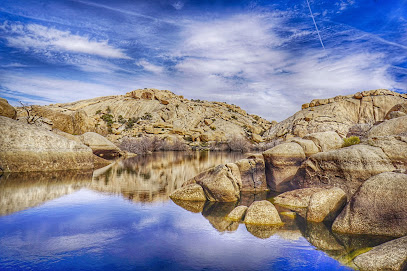
Cap Rock
Experience the stunning beauty of Cap Rock in Joshua Tree National Park, a top hiking destination perfect for nature lovers and adventure seekers.
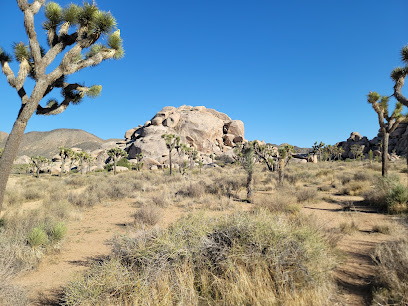
The Integratron
Discover The Integratron, a historical landmark in California known for its unique sound baths and fascinating history in a serene desert setting.
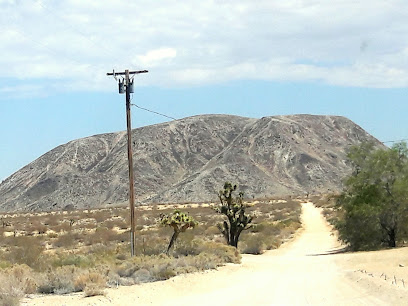
Giant Rock CA
Explore the stunning Giant Rock in Landers, CA - a unique blend of nature, history, and UFO lore amidst the breathtaking California desert.
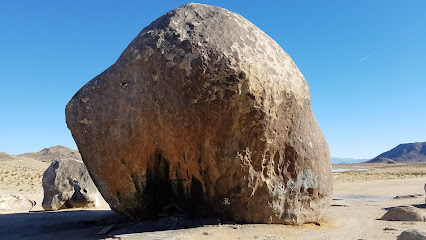
Joshua Tree National Park Visitor Center
Explore Joshua Tree National Park Visitor Center: your gateway to the desert's unique ecosystem, hiking trails, and stunning landscapes.

Desert Christ Park
Discover the tranquility of Desert Christ Park, where stunning sculptures meet breathtaking desert landscapes in the heart of Yucca Valley.
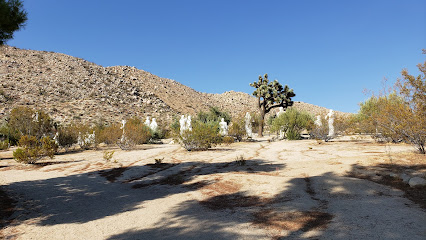
Arch Rock Nature Trail
Explore the breathtaking Arch Rock Nature Trail in Twentynine Palms – a scenic hiking experience in the iconic Joshua Tree National Park.
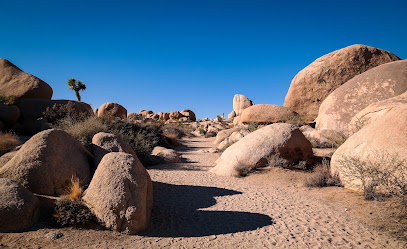
Quail Springs Picnic Area
Discover the serene beauty of Quail Springs Picnic Area, a tranquil picnic ground in Joshua Tree National Park perfect for relaxation and exploration.
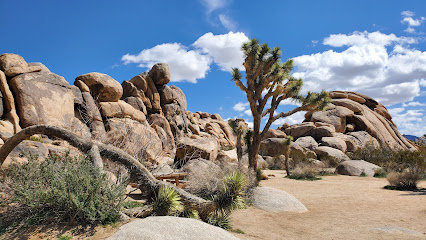
Unmissable attractions to see
Palm Springs Aerial Tramway
Experience the breathtaking views and thrilling adventure of the Palm Springs Aerial Tramway, a must-visit tourist attraction in California.
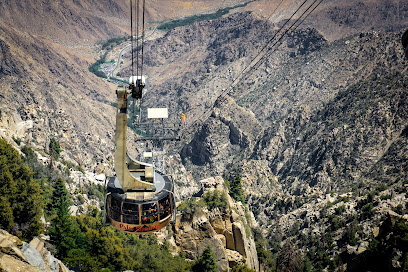
The Living Desert Zoo and Gardens
Explore the diverse wildlife and stunning botanical gardens at The Living Desert Zoo and Gardens, a unique desert experience in Palm Desert, California.
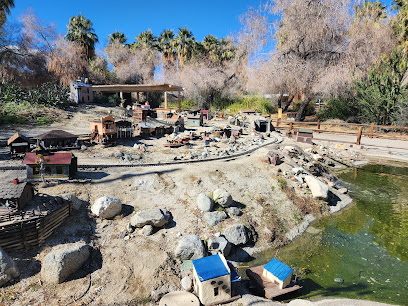
Cabazon Dinosaurs - World's Biggest Dinosaurs
Experience the wonder of the world's largest dinosaur sculptures at Cabazon Dinosaurs, a perfect blend of fun and education for the entire family.
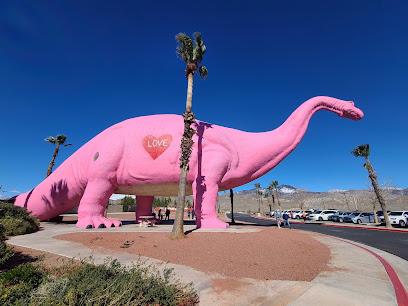
Joshua Tree Visitor Center
Explore the breathtaking Joshua Tree National Park from the Visitor Center - your guide to trails, wildlife, and local insights.
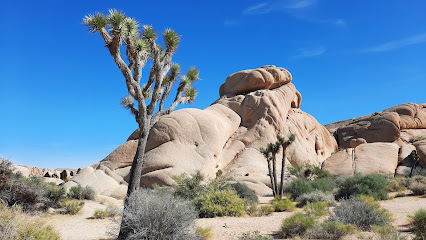
Salvation Mountain
Explore the vibrant artistry and spiritual essence of Salvation Mountain, a unique desert landmark in California, perfect for art lovers and spiritual seekers alike.

Keys View
Discover stunning panoramic views of Coachella Valley and beyond at Keys View in Joshua Tree National Park, a scenic spot not to be missed.
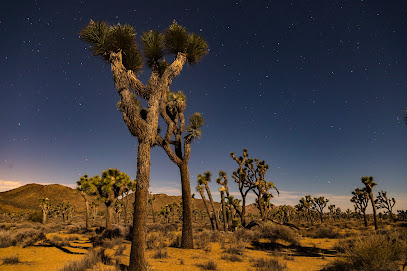
Skull Rock Trail
Explore the breathtaking Skull Rock Trail in Joshua Tree National Park, where stunning rock formations and desert beauty await every adventurer.
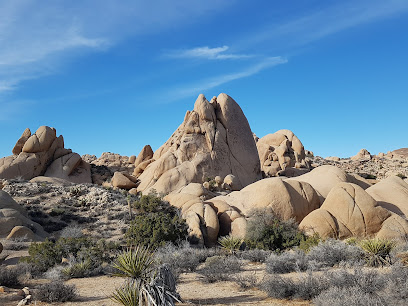
Hidden Valley Nature Trail Trailhead
Discover the stunning Hidden Valley Nature Trail in Joshua Tree National Park, a scenic gem perfect for hiking and nature photography.
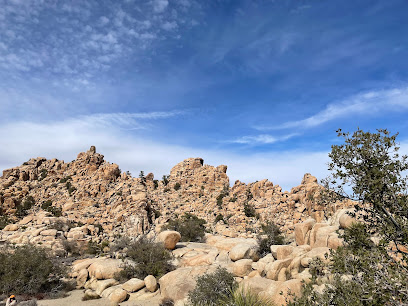
Coachella Valley Vista Point
Experience the stunning vistas and serene beauty of Coachella Valley Vista Point, a must-visit scenic spot in Palm Desert, California.
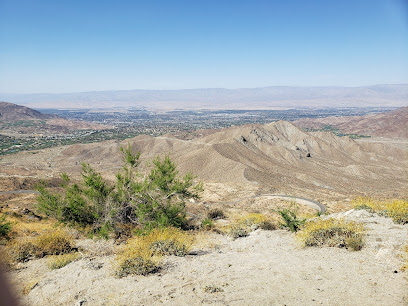
Arizona's Joshua Tree Forest
Explore the breathtaking beauty of Arizona's Joshua Tree Forest, a nature preserve featuring unique landscapes, iconic Joshua trees, and stunning views.
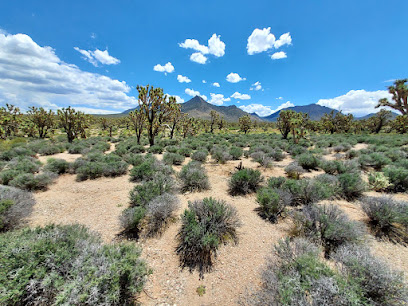
Cottonwood Visitor Center
Explore the wonders of Joshua Tree National Park at the Cottonwood Visitor Center, your starting point for adventure in California's breathtaking desert landscapes.
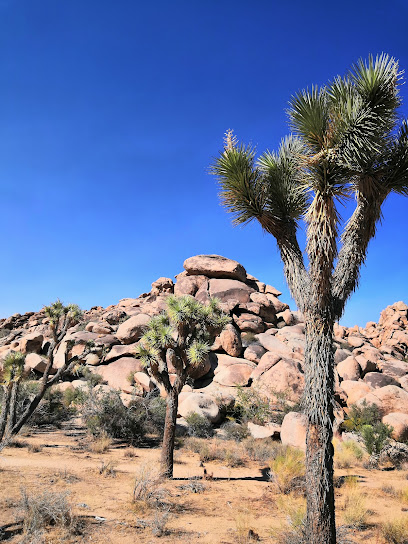
Big Morongo Canyon Preserve
Experience the stunning beauty and unique wildlife of Big Morongo Canyon Preserve, a must-visit nature escape in California's Morongo Valley.
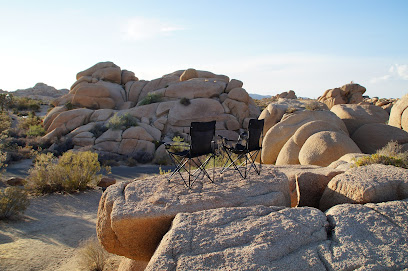
Noah Purifoy Outdoor Desert Art Museum
Discover the unique fusion of art and nature at Noah Purifoy Outdoor Desert Art Museum in Joshua Tree, California—a must-visit for art lovers and adventurers.
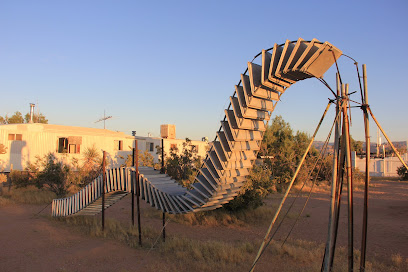
Arch Rock
Explore the breathtaking beauty of Arch Rock, a stunning natural formation in California's desert landscape, perfect for hiking and photography.
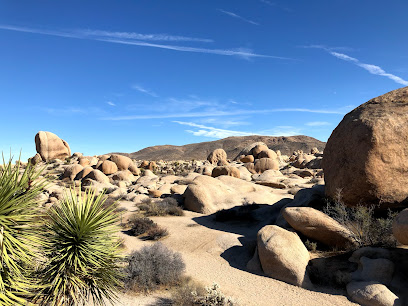
Barker Dam
Discover the stunning beauty and rich history of Barker Dam in Joshua Tree National Park, a must-see for nature lovers and adventurers.

Essential places to dine
Pappy + Harriet's
Experience mouthwatering barbecue and vibrant live music at Pappy + Harriet's in Pioneertown - a true taste of California's Wild West.
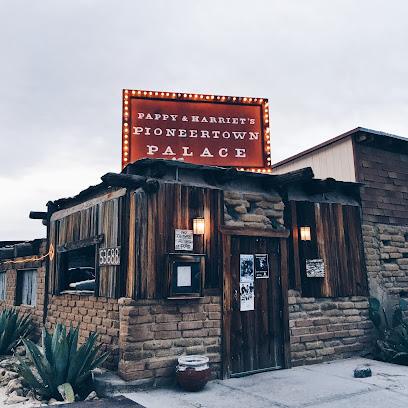
Joshua Tree Saloon
Discover delicious grill fare and vibrant local culture at Joshua Tree Saloon – your perfect post-adventure stop near Joshua Tree National Park.
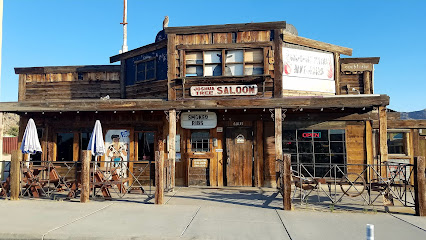
John's Place
Experience the charm of traditional American diner culture at John's Place in Yucca Valley - perfect for breakfast before exploring Joshua Tree National Park.
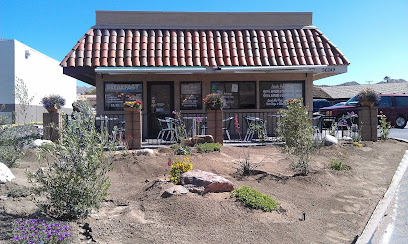
Crossroads Cafe
Discover delicious American comfort food at Crossroads Cafe in Joshua Tree – a must-visit diner offering locally sourced meals in a cozy setting.
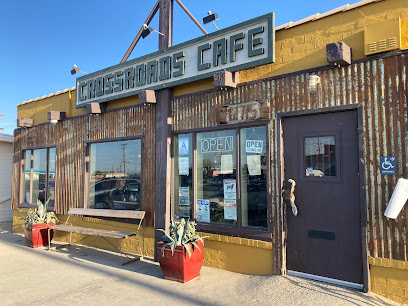
Steak 'n Shake
Experience the classic American diner vibe at Steak 'n Shake Yucca Valley with delicious burgers and irresistible milkshakes.
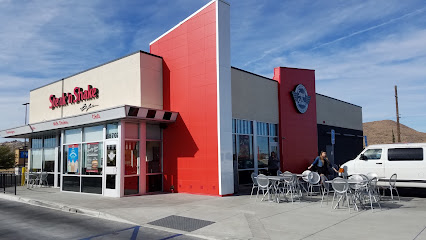
Applebee's Grill + Bar
Discover American comfort food at Applebee's Grill + Bar in Yucca Valley – perfect for families and travelers seeking delicious dining experiences.
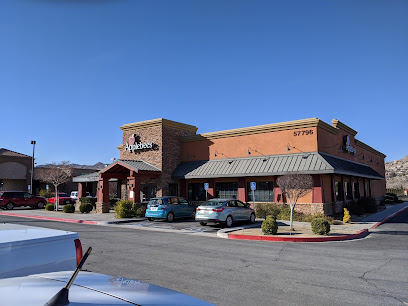
Pie for the People
Discover mouthwatering New York-style pizza at Pie for the People in Yucca Valley – a culinary delight near Joshua Tree National Park.

Kitchen in the Desert
Discover vibrant flavors at Kitchen in the Desert - where New American cuisine meets Caribbean flair in Twentynine Palms.
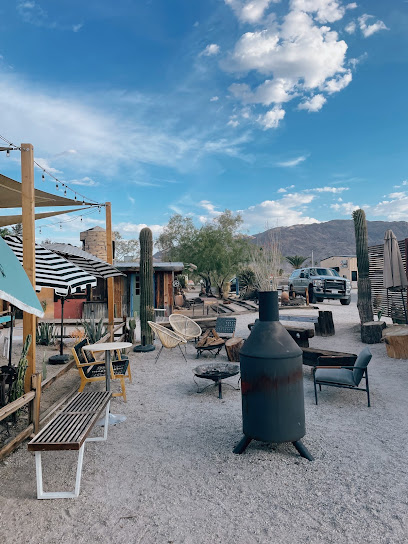
Frontier Café
Discover Frontier Café: A charming breakfast spot in Yucca Valley offering delicious meals amidst California's breathtaking desert landscape.
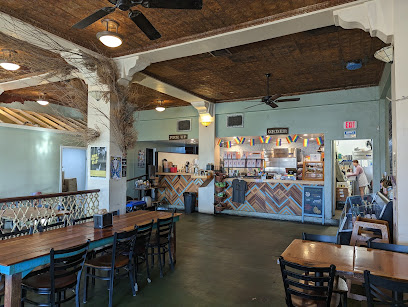
JT Country Kitchen
Experience delightful American breakfasts at JT Country Kitchen in Joshua Tree – your perfect start before exploring stunning desert landscapes.
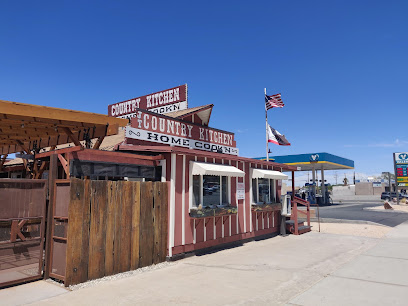
Sam's Indian Food & Pizza
Discover authentic Indian cuisine and delicious pizza at Sam's Indian Food & Pizza in Joshua Tree - perfect for every palate!
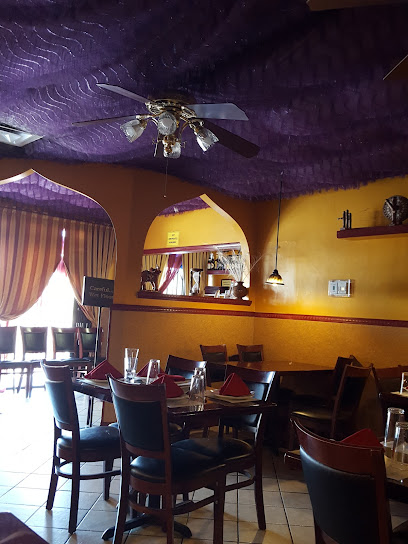
29 Palms Inn
Discover serenity at 29 Palms Inn - your gateway to Joshua Tree National Park with cozy accommodations and delicious dining options.
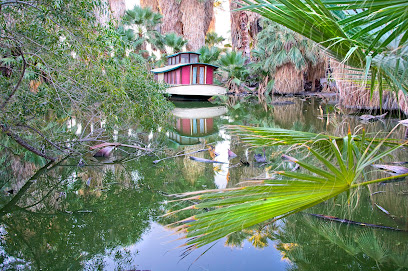
2 Guys Pies Brick Oven Pizzeria
Experience mouthwatering brick oven pizza at 2 Guys Pies in Yucca Valley – where flavor meets the charm of California's desert.
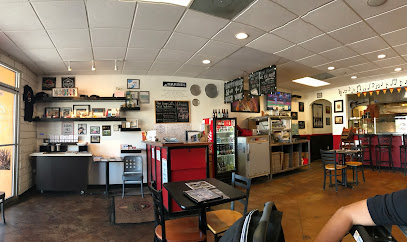
Dickeys Barbecue Pit
Experience authentic Southern barbecue at Dickey's Barbecue Pit in Yucca Valley – perfect for refueling after exploring Joshua Tree National Park.
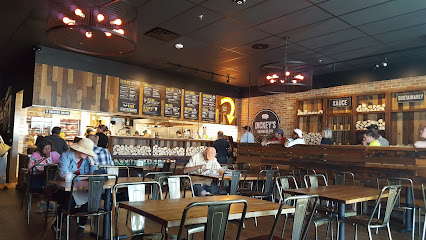
La Copine
Discover La Copine in Yucca Valley: A unique New American restaurant offering fresh local flavors and an inviting atmosphere.

Markets, malls and hidden boutiques
The Station Joshua Tree
Discover unique souvenirs and a charming wedding venue at The Station Joshua Tree, where local artistry meets desert charm.
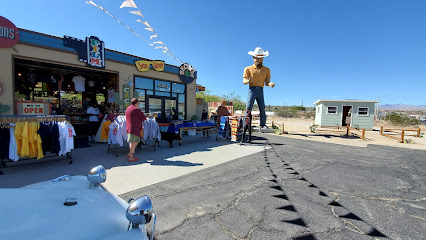
Coyote Corner
Explore Coyote Corner in Joshua Tree for unique gifts and local art that capture the essence of your desert adventure.
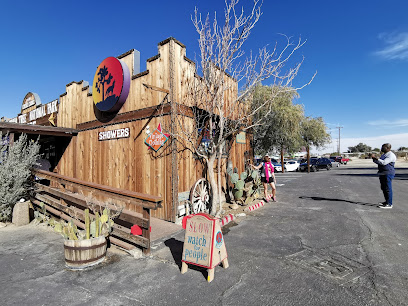
Joshua Tree Rock Shop
Discover the beauty of nature at the Joshua Tree Rock Shop, your ultimate destination for rocks, crystals, and geological treasures in California's desert.
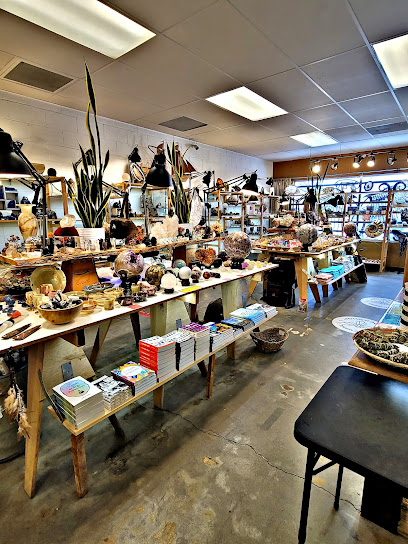
Rainbow Stew
Explore Rainbow Stew in Yucca Valley, where local artistry meets unique gifts, perfect for remembering your California adventure.
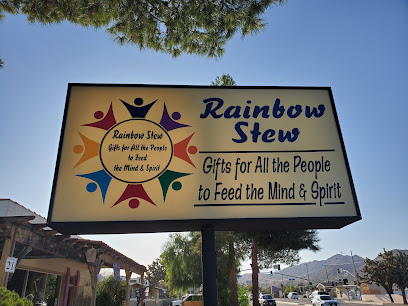
Joshua Springs Thrift Store
Explore Joshua Springs Thrift Store for unique finds and bargains in Yucca Valley, where every item has a story to tell.

Hoof & The Horn
Discover a treasure trove of vintage and contemporary apparel at Hoof & The Horn in Yucca Valley - a must-visit for fashion enthusiasts.

SUN OF THE DESERT
Explore Sun of the Desert, a unique gift shop in Joshua Tree offering vintage clothing, local crafts, and unforgettable souvenirs for every traveler.
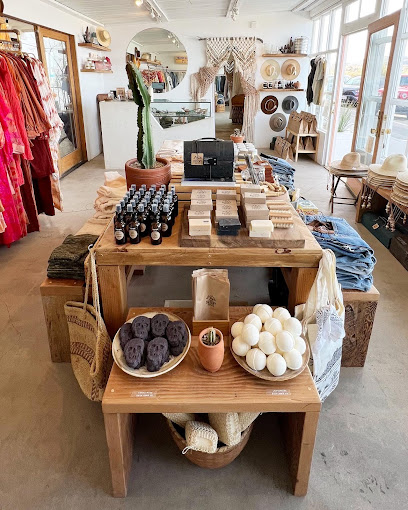
This N That Desert Treasures
Explore the eclectic charm of This N That Desert Treasures, a thrift store in Yucca Valley filled with vintage finds and local artistry.

Mojave Flea Trading Post
Explore the Mojave Flea Trading Post for unique antiques, local crafts, and a vibrant shopping experience in Yucca Valley, California.

Desert’s Edge Vintage
Explore the charm of vintage fashion at Desert’s Edge Vintage in Yucca Valley, where every piece tells a story and style meets nostalgia.

Desert Curios
Explore the eclectic treasures of Desert Curios in Yucca Valley, California, where antiques, collectibles, and vintage finds await every curious traveler.
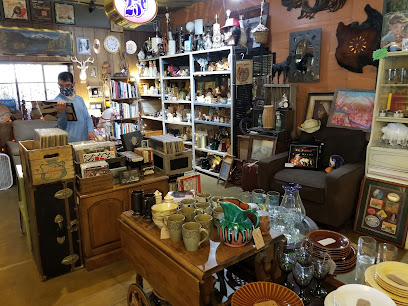
Rock & Rapture Jewelry and Gift Gallery @ The Joshua Tree Art Gallery (JTAG)
Explore handcrafted jewelry and unique gifts at Rock & Rapture Jewelry and Gift Gallery in Joshua Tree, celebrating local artists and the desert's beauty.
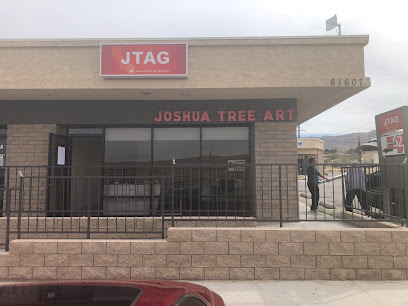
Roaming Travelers - Boutique Shop
Explore the vibrant spirit of Joshua Tree at Roaming Travelers, a boutique shop offering unique gifts, clothing, and local artisan treasures.

Soul Connection
Discover unique art, gifts, and local culture at Soul Connection in Joshua Tree, a treasure trove for tourists seeking authentic souvenirs.

Joshua Tree Blanket Co.
Explore Joshua Tree Blanket Co. for unique home goods and local art that embody the spirit of the desert and take a piece of Joshua Tree home.
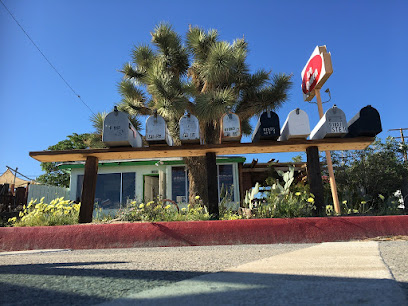
Essential bars & hidden hideouts
Pappy + Harriet's
Experience the ultimate blend of mouthwatering barbecue and live music at Pappy + Harriet's, a Pioneertown gem in the California desert.
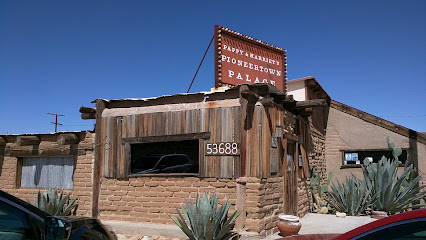
Joshua Tree Saloon
Experience the authentic taste of the Wild West at Joshua Tree Saloon, where hearty dishes meet a vibrant atmosphere amidst the stunning desert landscape.
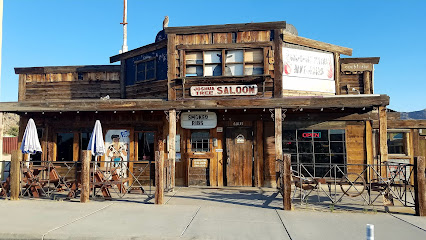
Crossroads Cafe
Discover the heart of Joshua Tree at Crossroads Cafe, where delightful comfort food meets local charm in a picturesque desert setting.

Applebee's Grill + Bar
Savor delicious American cuisine at Applebee's Grill + Bar in Yucca Valley, where family-friendly dining meets a casual atmosphere.
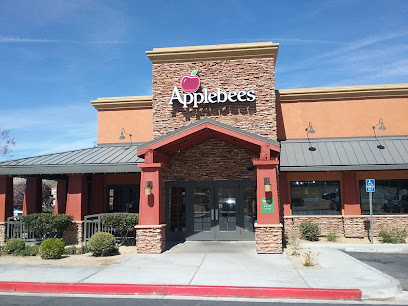
Kitchen in the Desert
Experience a culinary adventure at Kitchen in the Desert, where New American meets Caribbean fusion in the heart of Twentynine Palms.
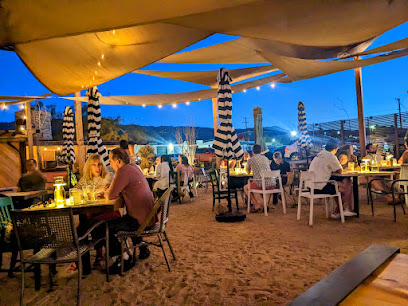
JT Country Kitchen
Experience the best of American breakfast at JT Country Kitchen in Joshua Tree, where delicious food meets a welcoming atmosphere.
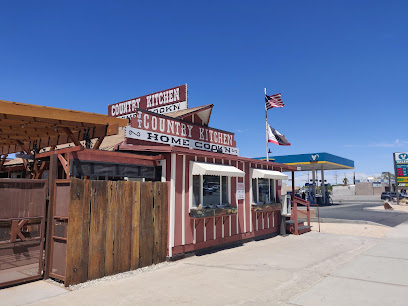
Sam's Indian Food & Pizza
Experience the vibrant fusion of Indian and Italian cuisine at Sam's Indian Food & Pizza in Joshua Tree, a culinary gem for every traveler.

29 Palms Inn
Experience comfort and nature at 29 Palms Inn, your perfect base for exploring Joshua Tree National Park.
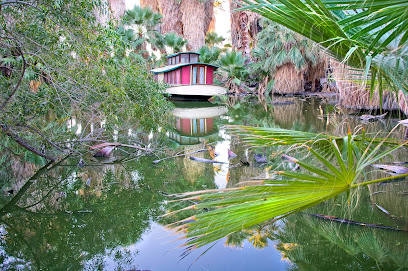
La Copine
Discover La Copine, a charming New American cafe in Yucca Valley, offering seasonal flavors and a delightful wine selection amidst the California desert.
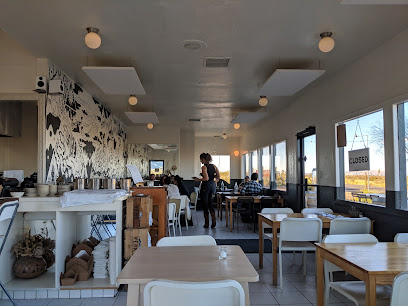
Castañeda's Mexican Food
Experience authentic Mexican cuisine in Joshua Tree at Castañeda's Mexican Food, where flavor and hospitality meet.

The Tiny Pony Tavern
Experience the warmth of Yucca Valley at The Tiny Pony Tavern, a charming grill and bar perfect for brunch, lunch, and evening entertainment.
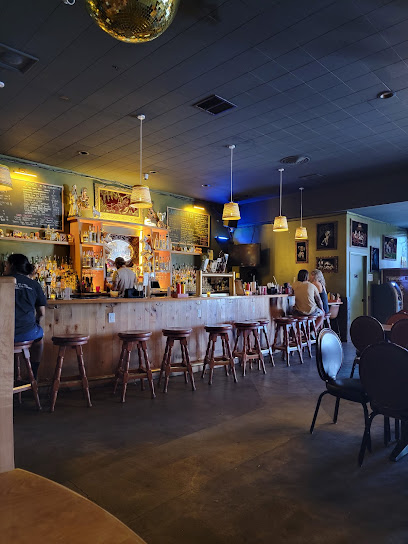
The Red Dog Saloon
Experience the vibrant atmosphere of The Red Dog Saloon in Pioneertown, California, a perfect blend of live music, delicious food, and Old West charm.
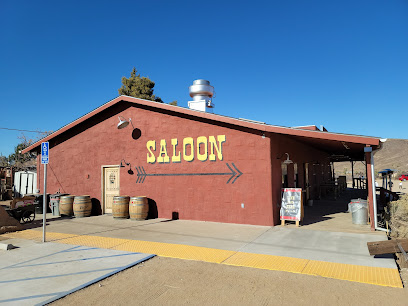
Royal Siam Cuisine Thai Restaurant
Experience the vibrant flavors of authentic Thai cuisine in the heart of Joshua Tree at Royal Siam Cuisine, a must-visit destination for food lovers.
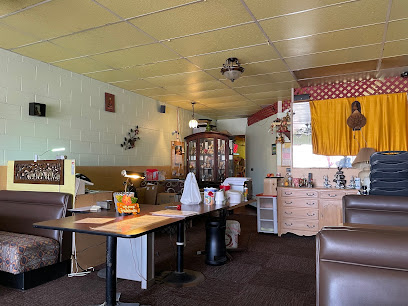
Giant Rock Meeting Room
Discover the vibrant fusion of art, music, and gourmet pizza at the Giant Rock Meeting Room in Yucca Valley, California.
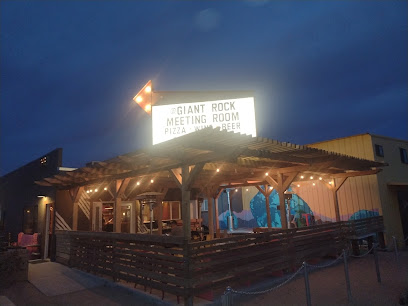
Sky High Pie
Experience delicious artisan pizzas in Joshua Tree, California, at Sky High Pie, a local favorite with a unique desert vibe.
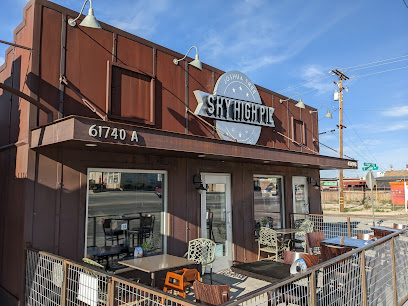
Local Phrases about Joshua Tree National Park
-
- HelloHowdy
[haw-dee] - GoodbyeCatch you later
[kach yoo lay-ter] - YesYup
[yuhp] - NoNah
[nah] - Please/You're welcomePlease/You're welcome
[pleez/yur wel-kum] - Thank youThanks a bunch
[thanks uh bunch] - Excuse me/SorryPardon me
[par-dun me] - How are you?Howdy partner?
[haw-dee par-tner] - Fine. And you?Just dandy. You?
[just dan-dee. yoo?] - Do you speak English?Y'all speak English?
[yawl speak ing-glish?] - I don't understandI'm plum confused
[I'm plum kun-fuzed]
- HelloHowdy
-
- I'd like to see the menu, pleaseMind showin' me the grub list?
[mind show-in' me the gruhb list?] - I don't eat meatI'm a veggie
[I'm a veh-jee] - Cheers!Bottoms up!
[baw-tums up!] - I would like to pay, pleaseCan I settle up?
[can I set-ul up?]
- I'd like to see the menu, pleaseMind showin' me the grub list?
-
- Help!SOS!
[ess-oh-ess!] - Go away!Scram!
[skram!] - Call the Police!Ring the Sheriff!
[ring the sher-iff!] - Call a doctor!Fetch a Doc!
[fetch uh dock!] - I'm lostI'm turned around
[I'm turned uh-round] - I'm illI'm under the weather
[I'm un-der the weh-ther]
- Help!SOS!
-
- I'd like to buy...I reckon I'll take...
[I rek-uhn I'll take...] - I'm just lookingJust browsin'
[just brows-in'] - How much is it?What's the damage?
[wuts the dam-ij?] - That's too expensiveThat's a mite pricey
[that's a mite prahy-see] - Can you lower the price?Can ya do me a deal?
[can ya do me a deel?]
- I'd like to buy...I reckon I'll take...
-
- What time is it?What's the hour?
[wuts the our?] - It's one o'clockIt's high noon
[it's high noon] - Half past (10)Half past (10)
[Half past (10)] - MorningMornin'
[morn-in'] - AfternoonAfternoon
[Afternoon] - EveningEvenin'
[even-in'] - YesterdayYest'day
[yest'day] - TodayToday
[Today] - TomorrowTomorra
[tom-or-uh] - 11
[1] - 22
[2] - 33
[3] - 44
[4] - 55
[5] - 66
[6] - 77
[7] - 88
[8] - 99
[9] - 1010
[10]
- What time is it?What's the hour?
-
- Where's a/the...?Where's a/the...?
[Where's a/the...?] - What's the address?What's the address?
[What's the address?] - Can you show me (on the map)?Can you show me (on the map)?
[Can you show me (on the map)?] - When's the next (bus)?When's the next (bus)?
[When's the next (bus)?] - A ticket (to ....)A ticket (to ....)
[A ticket (to ....)]
- Where's a/the...?Where's a/the...?
History of Joshua Tree National Park
-
Long before Joshua Tree National Park was established, the region was home to Native American tribes such as the Serrano, Cahuilla, and Chemehuevi. These tribes left behind evidence of their presence in the form of petroglyphs, pictographs, and ancient artifacts. They relied on the land for sustenance, using plants and animals for food, medicine, and tools.
-
In the late 18th century, Spanish missionaries and explorers traversed the region. They named many of the natural landmarks and left an indelible mark on the history of the area. The Spanish influence is evident in the names of places and the cultural exchanges that took place between the explorers and the indigenous tribes.
-
During the mid-19th century, the area now known as Joshua Tree National Park saw a surge of activity due to the California Gold Rush. Prospectors ventured into the rugged landscape in search of gold and other valuable minerals. While large-scale mining operations were not as prolific here as in other parts of California, numerous small-scale mines and abandoned mining sites still dot the park.
-
In the early 20th century, the Desert Homestead Act encouraged settlers to move to the arid lands of the American West. Many homesteaders came to the Joshua Tree area, establishing small farms and ranches. Though the harsh desert environment made farming difficult, the remnants of these homesteads can still be seen throughout the park.
-
On August 10, 1936, President Franklin D. Roosevelt designated a large portion of the Mojave Desert as Joshua Tree National Monument to protect its unique natural beauty and biodiversity. This designation was a result of the efforts of Minerva Hoyt, a passionate advocate for desert conservation who recognized the need to preserve the stunning Joshua Trees and other desert flora.
-
During World War II, parts of Joshua Tree National Monument were used as a training ground for General George S. Patton’s troops. The harsh desert conditions provided an ideal environment for preparing soldiers for the African and Pacific theaters of war. Today, visitors can find remnants of training camps and other military installations within the park.
-
In 1994, the California Desert Protection Act was signed into law, elevating Joshua Tree from a National Monument to a National Park. This act provided greater protection for the park’s natural resources and expanded its boundaries. The change in status brought increased recognition and funding, allowing for improved visitor facilities and conservation efforts.
-
Joshua Tree National Park has been a source of inspiration for artists, musicians, and writers for decades. The park's otherworldly landscapes and serene beauty have influenced the work of many creative individuals, including the famous rock band U2, who named their iconic album 'The Joshua Tree' after the park. The integration of art and nature continues to be a significant aspect of the park's cultural landscape.
Joshua Tree National Park Essentials
-
Joshua Tree National Park is located in southeastern California. The closest major airports are Palm Springs International Airport (PSP), approximately 50 miles away, and Los Angeles International Airport (LAX), about 140 miles away. From these airports, you can rent a car or take a shuttle service to reach the park. Driving is the most convenient way to get to Joshua Tree, and the park is accessible via Interstate 10 and Highway 62.
-
Once inside Joshua Tree National Park, a car is the best way to get around due to the park's large size and the distances between attractions. There is no public transportation within the park itself. Biking is another option for exploring the park, but be prepared for desert conditions. For those who prefer not to drive, guided tours are available from nearby cities like Palm Springs.
-
The official currency in the United States is the US Dollar (USD). Credit and debit cards are widely accepted in nearby towns and within the park for entrance fees and at visitor centers. However, it’s advisable to carry some cash for smaller purchases, especially when visiting remote areas or local vendors. ATMs are available in nearby towns like Joshua Tree and Twentynine Palms.
-
Joshua Tree National Park is generally safe for tourists. However, always be aware of your surroundings and keep an eye on your belongings. The surrounding towns of Joshua Tree, Twentynine Palms, and Yucca Valley are relatively safe but, like any travel destination, exercise standard precautions. Avoid walking alone at night in unfamiliar areas and lock your car when it's unattended.
-
In case of emergency, dial 911 for immediate assistance. Cell phone reception can be spotty in some areas of the park, so it's wise to inform someone of your plans before heading out. Visitor centers are equipped with first aid and can assist in minor emergencies. Always carry water, a first aid kit, and know the location of the nearest park ranger station.
-
Fashion: Do wear comfortable, weather-appropriate clothing and sturdy hiking boots. Don’t forget a hat and sunscreen to protect against the sun. Religion: There are no specific religious customs to observe, but always be respectful of others' beliefs and practices. Public Transport: There is no public transportation within the park. Plan accordingly. Greetings: A simple handshake or verbal greeting is standard. People are generally friendly and welcoming. Eating & Drinking: Do carry plenty of water and snacks, especially when hiking. Don’t leave food unattended, as it can attract wildlife.
-
To experience Joshua Tree National Park like a local, visit during the shoulder seasons (spring and fall) to avoid the extreme summer heat and crowds. Attend a ranger-led program to learn more about the park’s natural and cultural history. For a unique experience, try stargazing; the park has some of the darkest skies in Southern California, making it perfect for astronomy enthusiasts. Don’t miss the Cholla Cactus Garden at sunrise or sunset for stunning photo opportunities.
Trending Landmarks in Joshua Tree National Park
-
Joshua Tree Visitor Center
-
Keys View
-
Skull Rock Trail
-
Hidden Valley Nature Trail Trailhead
-
Cottonwood Visitor Center
-
Noah Purifoy Outdoor Desert Art Museum
-
Arch Rock
-
Barker Dam
-
Cap Rock
-
The Integratron
-
Giant Rock CA
-
Joshua Tree National Park Visitor Center
-
Desert Christ Park
-
Arch Rock Nature Trail
-
Quail Springs Picnic Area
Nearby Cities to Joshua Tree National Park
-
Things To Do in Joshua Tree
-
Things To Do in Palm Springs
-
Things To Do in Temecula
-
Things To Do in Carlsbad
-
Things To Do in Oceanside
-
Things To Do in Lake Havasu City
-
Things To Do in La Jolla
-
Things To Do in San Diego
-
Things To Do in Chula Vista
-
Things To Do in Yuma
-
Things To Do in Coronado
-
Things To Do in Laguna Beach
-
Things To Do in Irvine
-
Things To Do in Tijuana
-
Things To Do in Anaheim


